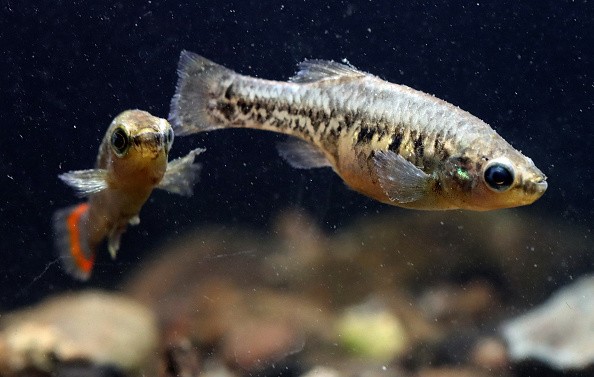An initiative to preserve tequila fish that began in 1998 has finally resulted in its reintroduction into Mexican rivers. The Tequila fish, formerly extinct in the wild, is the first Mexican species to come back from extinction.
Conservationists acknowledge that saving a drab green, seven-centimeter-long fish that most people have never heard of has been a long road and a lot of work. Still, they hope it may serve as a rallying cry to help safeguard the country's rivers.
An Important Project

Professor Omar Dominguez of Mexico's Michoacana University told the BBC, "It's a project that has now set an important precedent for the future conservation of the numerous fish species in the nation that are imperiled or perhaps extinct in the wild, but which rarely grab our attention."
Michoacana University received five female and five male tequila fish from Chester Zoo in England in 1998 and carefully fostered them into greater and larger numbers.
To prepare the fish for life in the wild after being kept in captivity for several generations, Dominguez and his team built vast artificial pond habitats at the university.
There were 40 males and 40 females who had to deal with predatory species, parasites, food variations, and other challenges.
The Tequila fish is tougher than it appears, and it passed this fish-version of the SEAL-teams training program with flying colors, reproducing to 10,000 people in the process.
Dominguez released 1,500 fish into the Jalisco rivers in southwest Mexico, relying primarily on local groups to help with the reintroduction.
Population Increase
The population is rapidly increasing, and the IUCN has upgraded the species' status from Extinct in the Wild to Endangered.
"This only goes to demonstrate that when animals are returned to the wild at the proper time and in the correct surroundings, they can re-adapt to the wild," environmentalist Gerardo Garcia told the BBC.
When successful, species reintroduction is a potent conservation tool, but it is a costly management method, and reintroduction attempts for many species, including freshwater fish, frequently fail.
Important Factors
When a complex interaction of factors is at play, such as for species that form metapopulations, demographics, environment, and genetic variability are all factors that affect reintroduction success.
However, when a complex interaction of factors is at play, these factors are often examined independently. Dr. Meryl Mims, a former USGS Mendenhall Fellow, and Virginia Tech University professor, led a team of coauthors in using a spatially explicit simulation model.
They evaluate a hypothetical bull trout reintroduction to three watersheds in a northeastern Washington river system, looking at how factors like initial genetic diversity, life history variation, and connectivity interacted.
Success Rate
The findings show that reintroduction success, as assessed by abundance, dispersion, and genetic diversity, is likely dependent on passage across upstream dams and other barriers.
For more animal related news, don't forget to follow Nature World News!
© 2025 NatureWorldNews.com All rights reserved. Do not reproduce without permission.





